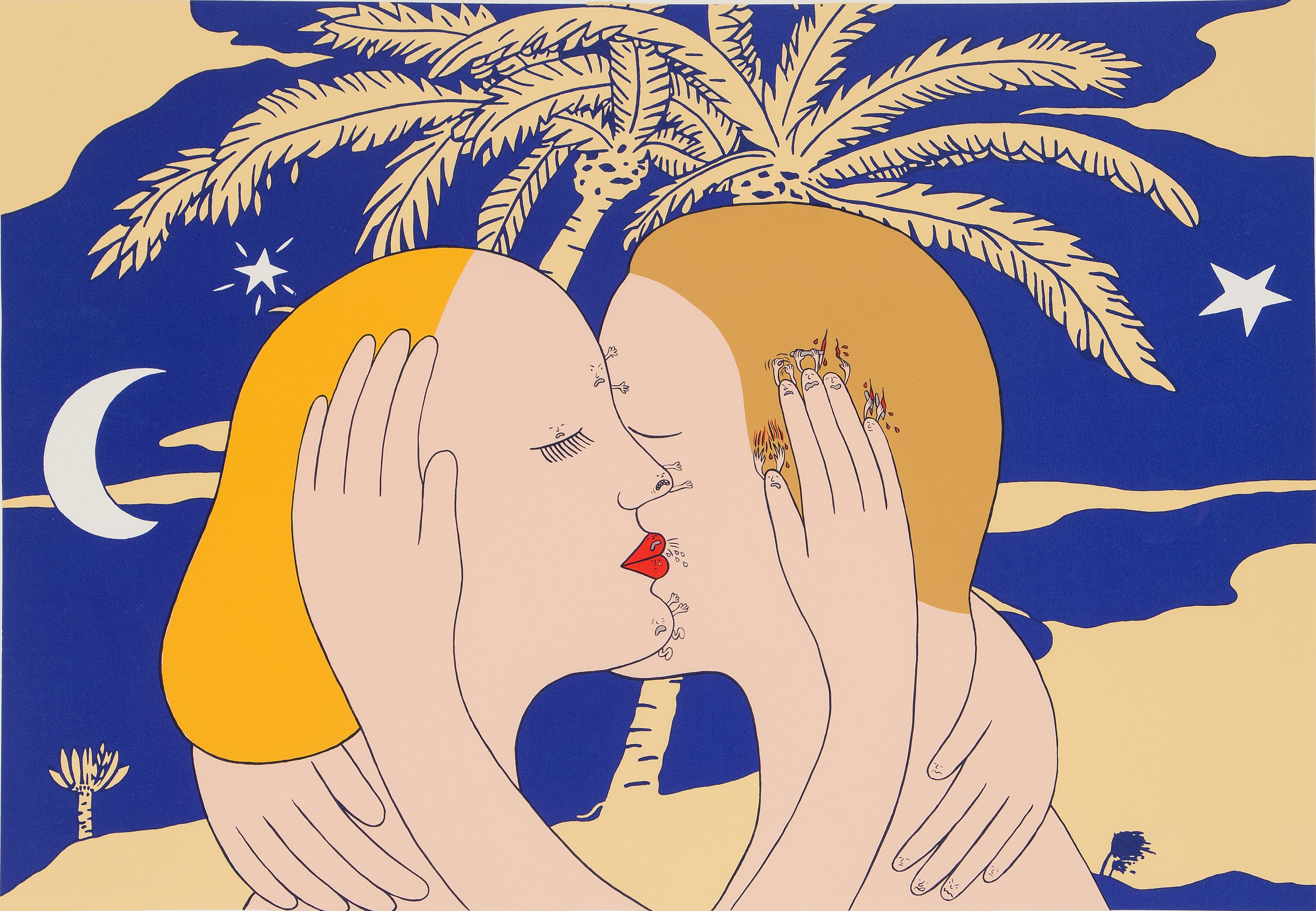March 23 – April 20, 2024: Marie-Louise Ekman’s work shown at Gällivare Museum of Culture
23.03—20.04 2024
Gällivare Kulturmuseum
Gällivare Museum of Culture
Exhibition with works by Marie-Louise Ekman at Gällivare Museum of Culture
Love, everyday silliness, and toilet seat philosophy. The artist, professor, and playwright Marie-Louise Ekman will be exhibiting graphic artworks from five decades in her first tour of Norrbotten County, starting at the Gällivare Museum of Culture.
Opening Saturday. March 23, 12:00
Exhibition opening and conversation with the artist held online
The exhibition “You Can Do What You Want: Marie-Louise Ekman’s Art over Fifty Years” opens on March 23, 2024. Through ten works, the audience will gain insight into the life of a remarkable artist who undoubtedly has mastered the art of multitasking. She has written both films and plays and worked as rector at the Royal Institute of Art as well as director of the Royal Dramatic Theatre in Stockholm, all the while remaining highly relevant as an artist.
Among the works in the exhibition, we find Kärlek (Love) from 1976, the background of which has taken inspiration from the textile pattern creations of her partner at the time, Carl-John De Geer. Here we see a couple in an embrace, but on the fingers of the woman are tiny figures with fingers of their own, scratching at the man’s cheek. Another famous work is the iconic På toaletten (On the toilet), otherwise known as Aftonsnabeln (a play on the Swedish daily newspaper Aftonbladet), which provides a mocking commentary of newspapers’ tendency to focus on gossip and trivialities rather than death and war.
During the 1960s, Marie-Louise Ekman was an influential voice in the group that worked on the underground journal Puss (Kiss). She went on to create films and has more than ten titles to her name. She later became an influential professor and rector of the Royal Institute of Art. On top of this she has directed several plays and was from 2009 to 2014 director of the Royal Dramatic Theatre in Stockholm. Throughout the years, she has continued to work with graphic art in different ways, with themes centered around relationships and the absurdity of daily life.
Relationships and meetings between people play a central role in Ekman’s artistry, which encompasses painting, three-dimensional work, appliqués, cinema, theatre, television series, and—not least—graphic art. Political, erotic, and artistic taboos are overridden in her playful “naïve pop” art style, which usually depicts mundane scenes from the home. There is a mix of references to the Pop Art of the 1960s and the naïve forms of expression seen among other self-taught artists and in children’s book illustrations. Alongside this is usually an element of the wildly absurd. Theatre as both a visual form and metaphor continually appear in her narrative scenes, regardless of technique or genre.
Ekman was one of the first artists in Sweden who embraced the popular culture that came about during the rise of the Social Democratic welfare state. She did this from the perspective of a young woman, and at times from the perspective of a child. The bedroom of the young girl became an aesthetic language in and of itself, dominated by the color pink, and crafting became an artistic method. When the director of Moderna Museet’s Pontus Hultén purchased her large silk appliqué with the title Fiskbullar i hummersås (Fish balls in lobster sauce) in 1968, Sweden was granted one of its first pop art icons, with a feminist edge. She became the first ever female professor at the Royal Institute of Art when she was appointed in 1984, after two hundred and fifty years of the school’s existence.
The exhibition will travel to Haparanda konsthall from June 18 to July 31, and Råneå konsthall from September 7 to October 6, 2024.
Image: Marie-Louise Ekman, På toaletten, 1969
